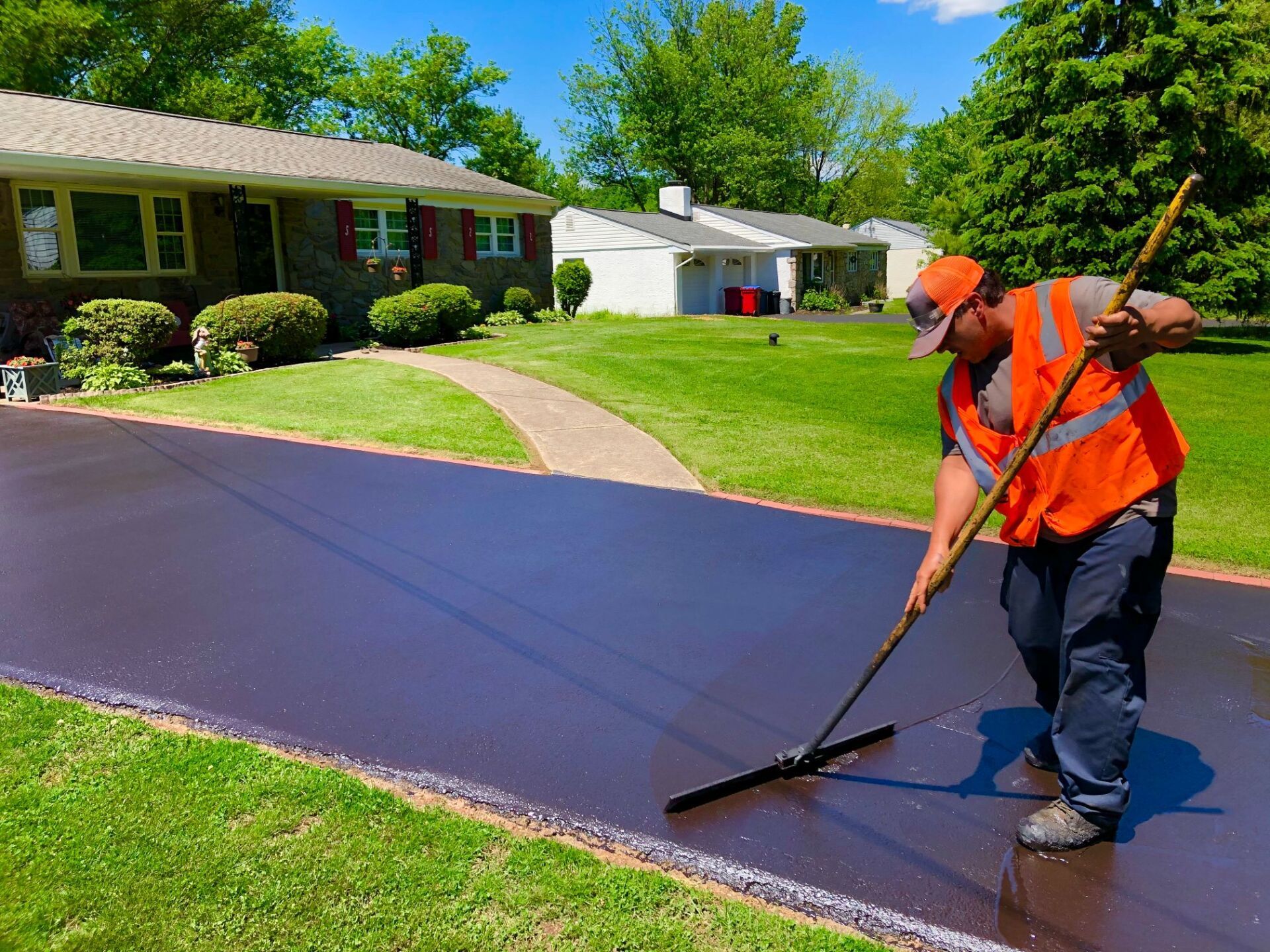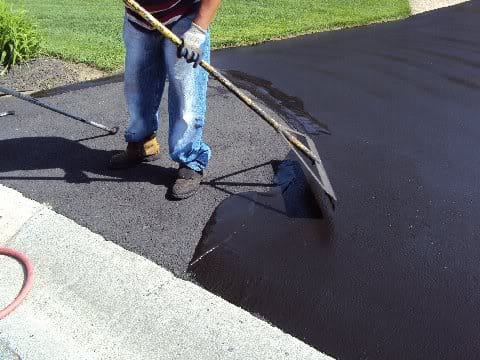Cold Mix Asphalt Vs. Hot Mix Asphalt: Which Is Right for You?

Structure Distinctions
Cold mix and hot mix asphalts differ significantly in their make-up, with distinctive characteristics that impact their performance and applications. Cold mix asphalt is produced by emulsifying the asphalt binder with water and an emulsifying agent prior to blending it with aggregate. This method permits the asphalt to be practical at reduced temperature levels, making it suitable for momentary repairs and for usage in cooler climate condition. Hot mix asphalt, on the other hand, is manufactured at high temperature levels, generally in between 300-350 ° F, which helps to attain far better compaction and a more durable last item. The warm mix asphalt production process entails heating up the accumulation and asphalt binder separately before incorporating them at the asphalt plant.
In addition, cold mix asphalt often tends to be much less dense and much more versatile than warm mix asphalt. This versatility makes it better matched for locations with higher degrees of motion, such as driveways or roadways with heavy traffic. On the other hand, warm mix asphalt is understood for its high durability and resistance to rutting and cracking, making it a preferred option for highways and high-traffic roads where longevity is essential.
Installation Process Variances
The process of setting up cold mix and hot mix asphalt displays notable variances in their treatments and needs. Cold mix asphalt, being a more flexible material, can be used directly from the bag or container onto the hole or harmed location. It calls for very little preparation job, such as cleaning the area and condensing the chilly blend with hand tools. This makes it a practical alternative for fast and short-term fixes. On the other hand, warm mix asphalt requires a more fancy setup procedure. It includes warming the combination to high temperature levels before laying it down on an effectively prepared base. The prep work includes compacting the base, using a tack coat, and utilizing hefty machinery like pavers and compactors for a durable and smooth surface. Due to the home heating needs, warm mix asphalt installments are typically performed by experts with specific tools, making sure an extra permanent and structurally audio outcome.
Resilience and Durability Elements
When thinking about asphalt options, toughness and long life are important aspects to evaluate for long-term pavement performance. Hot mix asphalt (HMA) is known for its extraordinary resilience and longevity. The heats during the laying and blending procedure permit much better compaction, resulting in a denser and more powerful sidewalk framework. This results in HMA being much more immune to rush hour lots, extreme weather, and the effects old contrasted to cold mix asphalt (CMA)
In terms of durability, HMA typically outshines CMA because of its remarkable stamina and resistance residential properties. HMA sidewalks have a longer life span, needing much less frequent fixings and maintenance, which can convert to set you back financial savings over time. In addition, HMA sidewalks are much more quickly adjustable to fulfill particular project requirements, additionally boosting their toughness.
Expense Factors To Consider
Taking into consideration the economic implications is an important facet when examining the selection between hot mix asphalt (HMA) and cold mix asphalt (CMA) for pavement tasks. While the initial expense of warm mix asphalt is normally more than that of cold mix cold mix asphalt asphalt, HMA frequently provides an extra cost-efficient service in the lengthy run as a result of its premium toughness and longevity. HMA is recognized for its capacity to endure rush hour loads and harsh climate condition, lowering the requirement for regular repairs and upkeep. On the various other hand, cold mix asphalt is a lot more inexpensive in advance yet might require more constant patching and resurfacing, resulting in greater maintenance expenses gradually.
In addition to material costs, it's important to consider the costs connected with installment and maintenance when contrasting HMA and CMA. HMA normally requires specialized equipment and experienced labor for proper setup, which can impact total job costs. Alternatively, CMA is simpler to work with and can usually be applied utilizing easier techniques, possibly reducing installment expenditures. Ultimately, the decision between HMA and CMA must think about not just the first cost however additionally the lasting financial ramifications to figure out the most cost-effective choice for the certain sidewalk task.
Environmental Effect Comparison
Contrast of the ecological impacts between hot mix asphalt (HMA) and cool mix asphalt (CMA) discloses distinct differences in sustainability techniques. HMA manufacturing calls for high temperatures, leading to raised energy consumption and greenhouse gas emissions.
Furthermore, using CMA commonly entails reusing existing asphalt pavement, promoting source preservation and lowering the quantity of waste sent out to landfills. This recycling facet additionally enhances the sustainability of CMA compared to HMA. Overall, when considering the ecological impact, CMA arises as a much more environmentally lasting selection because of its reduced energy needs, lowered exhausts, and the potential for reusing existing products. By selecting CMA over HMA, roadway building tasks can add favorably to ecological conservation initiatives.
Verdict
In final thought, the option in between cool mix asphalt (CMA) and hot mix asphalt (HMA) relies on various aspects such as make-up, setup procedure, toughness, long life, price, and ecological impact. asphalt patch repair. While CMA offers a cost-efficient and quick remedy for small repairs, HMA makes certain exceptional resilience and durability for hefty web traffic locations. Take into consideration these elements thoroughly to figure out which sort of asphalt is the appropriate choice for your paving requires

Considering the financial ramifications is a crucial aspect when examining the choice between hot mix asphalt (HMA) and chilly mix asphalt (CMA) for sidewalk jobs. While the initial price of warm mix asphalt is typically greater than that of cool mix asphalt, HMA commonly provides a much more affordable remedy in the lengthy run due to its premium resilience and longevity. asphalt repair.Contrast of the ecological effects between warm mix asphalt (HMA) and cool mix asphalt (CMA) exposes distinct distinctions in sustainability practices.In final thought, the option in between chilly mix asphalt (CMA) and warm mix asphalt (HMA) depends on various aspects such as composition, installment procedure, durability, long life, expense, and ecological effect